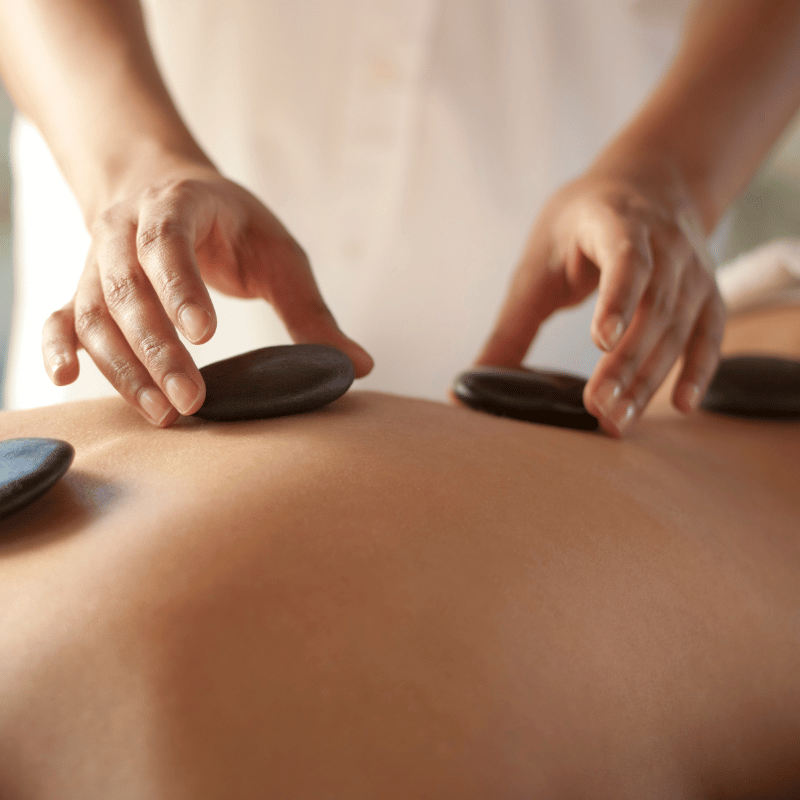
Massage Therapy Industry Fact Sheet
Read about the current state of the massage therapy profession.
As we look at key market data and AMTA surveys from the past year, the state of the massage therapy profession looks bright.
Using insights from our Massage Therapy Industry Fact Sheet, you can better understand your clients and the massage profession, helping you grow your practice. Download the fact sheet to see all of the details, based on AMTA's 2025 Massage Profession Research Report.

Who is Getting Massage?
Gender, parental status and income affect the likelihood of massage use.
Women are more likely to receive massage than men. Of those surveyed, 1 in 4 women received a massage within the last year versus 1 in 5 men.
Consumers with children under the age of 18 at home are 10% more likely to get a massage than those without children at home.
The higher the household income, the more likely consumers are to get a massage. While 33% of those making $100,000 or more got a massage last year, only 17% of those making $50,000 or less got a massage.
Why Are Consumers Getting Massage?
Health, wellness, and mental health are the primary reasons people get massage.
In the last 12 months, 62% of individuals received massage for health and wellness conditions; the top conditions that led consumers to get massage were soreness/stiffness/spasm (35%) and chronic pain relief and management (20%).
The main mental health conditions leading consumers to get massage in the last year were relaxation and stress reduction (59%) and mental health reasons (48%).
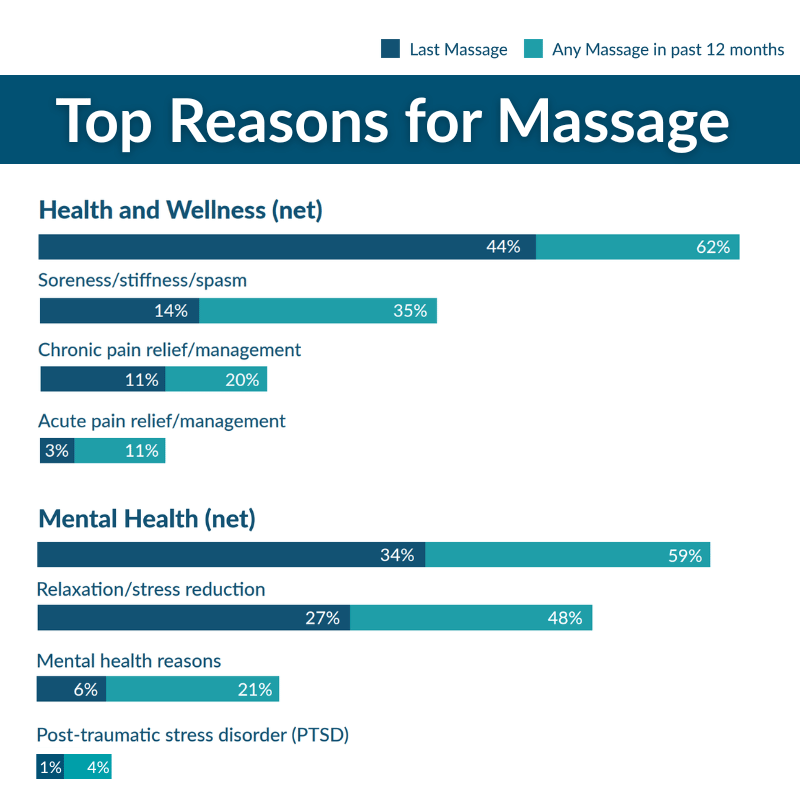
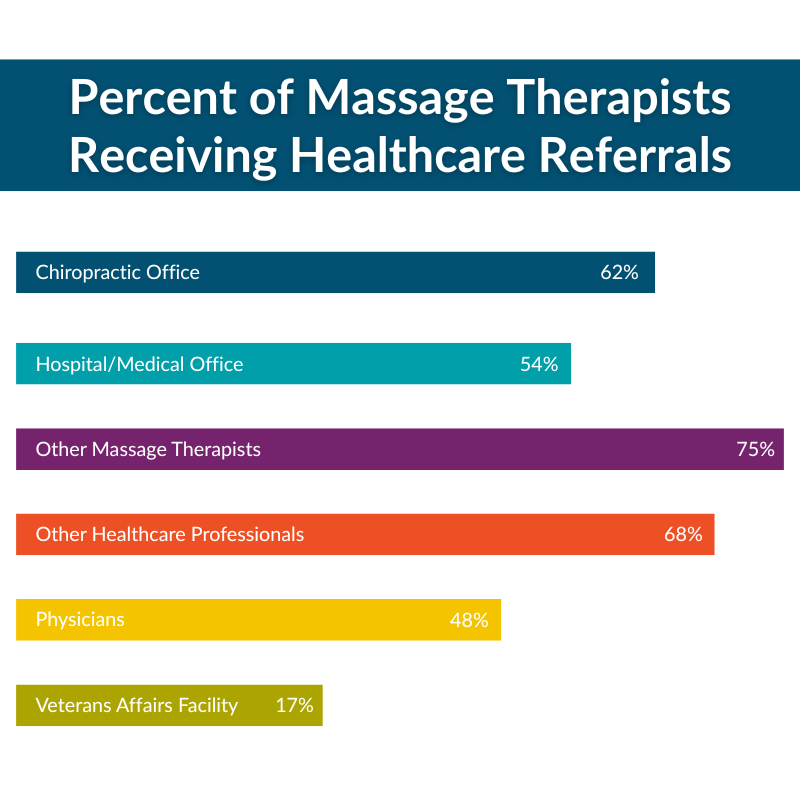
Which Healthcare Providers Are Referring Consumers for Massage?
Massage therapy's growing role in healthcare has led to more referrals
The majority of massage therapists receive referrals from other massage therapists (75%).
Other top referral sources are other healthcare professionals (68%) and chiropractic offices (62%).
About Massage Therapists

Top Settings Where Massage Therapists Work
Massage therapists can work in a variety of environments and may practice in multiple settings:
- Their office (39%)
- Client's home (38%)
- Massage therapist's home (28%)
- Spa or salon (21%)
- Massage therapy franchise (14%)
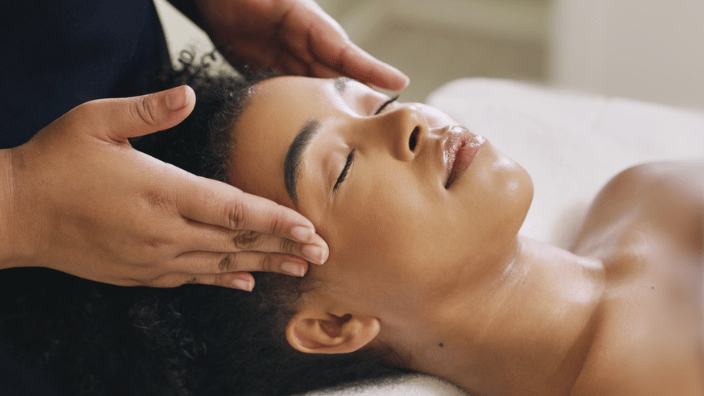
Massage Therapy Career
Individuals enter massage therapy at different points in their careers and work as a sole practitioners, contractors, and full or part-time employees.
81% of total respondents reported that massage therapy was not their first career. The largest percentage of massage therapy instructors (32%) had 6-10 years of related experience.
Download the 2025 Fact Sheet
Understanding your clients and the massage profession better can help you grow your practice. See all of these insights by downloading the complete fact sheet, based on AMTA's Massage Profession Research Report.
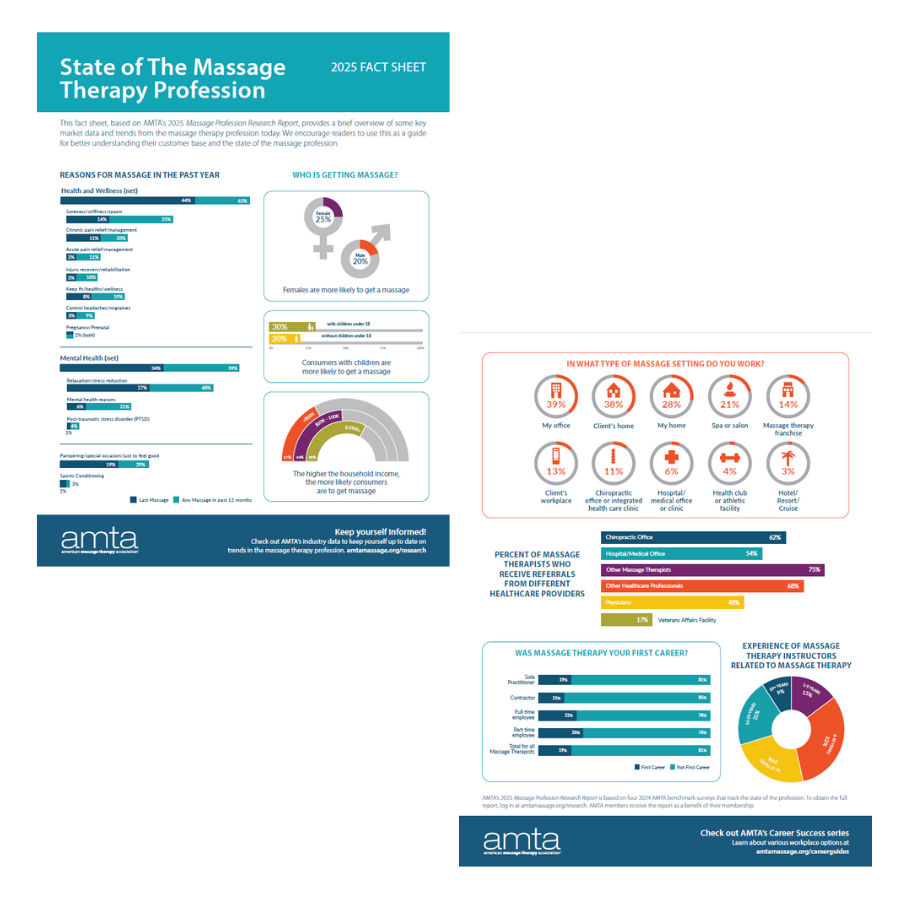
Additional Resources
Consumer Views & Use of Massage
The latest research on consumers' views of the massage therapy profession and their use of massage therapy services.
Massage Profession Research Report
Discover the current state of the massage therapy profession and the latest industry trends.
Find a Massage Therapist
Find a massage therapist near you with our national locator service.